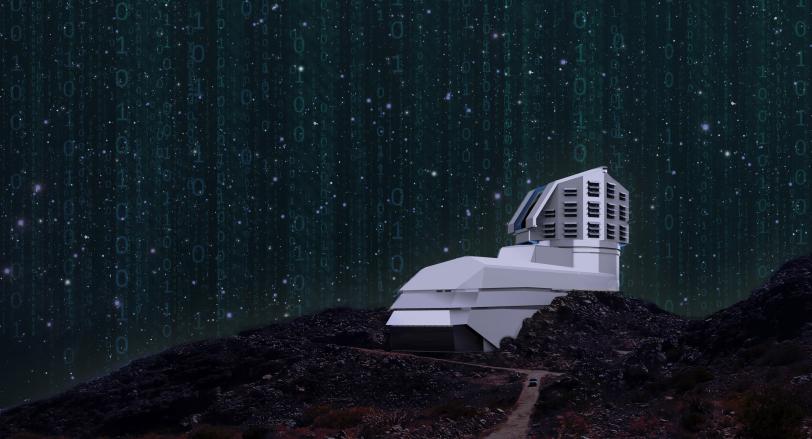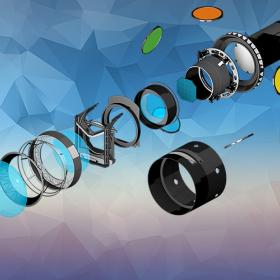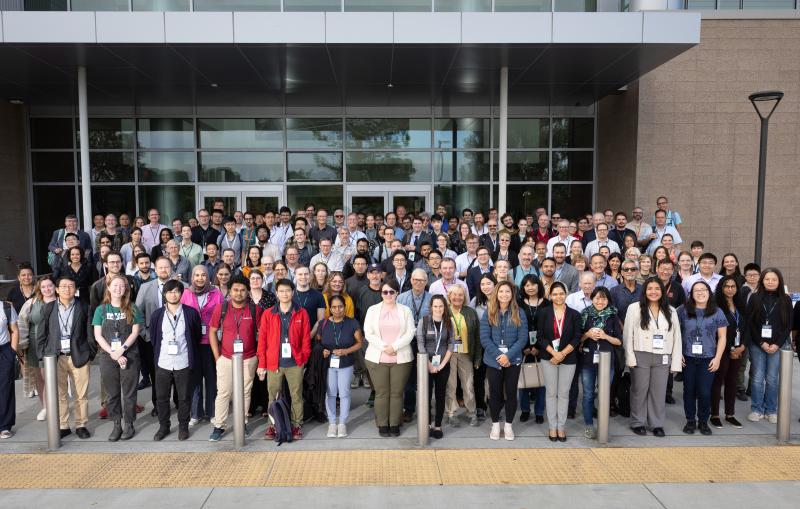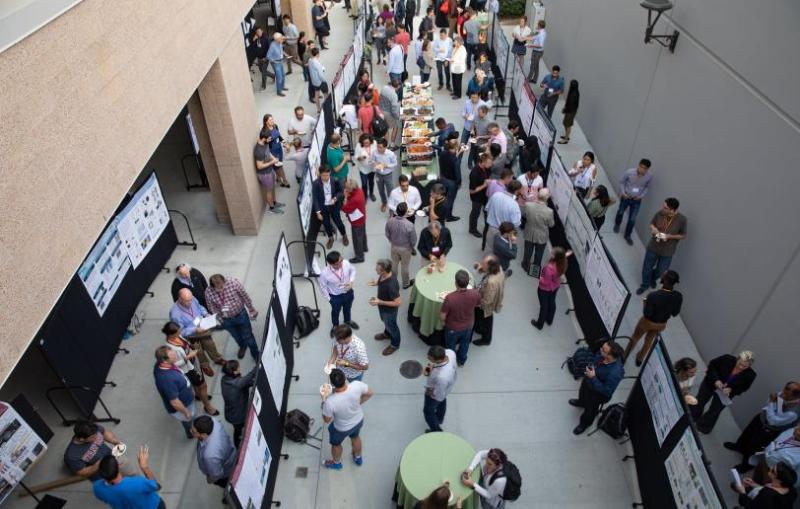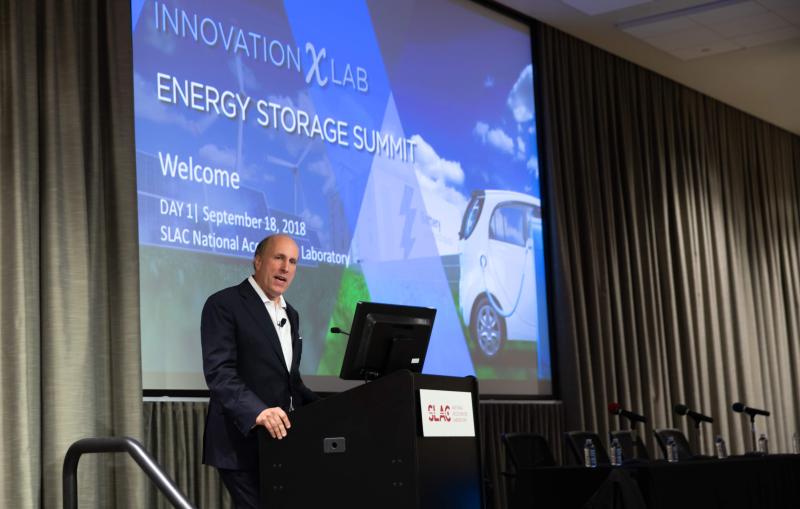Scientists Gather at SLAC to Prepare for Large Synoptic Survey Telescope
Workshops Address LSST Data Management and Dark Energy Research
When the Large Synoptic Survey Telescope begins in 2022 to image the entire southern sky from a mountaintop in Chile, it will produce the widest, deepest and fastest views of the night sky ever observed – and a flood of 6 million gigabytes of data per year that are expected to provide new insights into dark matter, dark energy and other cosmic mysteries.
However, managing LSST’s vast data archive and extracting meaningful information from it in an acceptable amount of time will be challenging and requires the development of new computational tools. “Only a few companies in the world, like Google or Facebook, are currently dealing with comparable amounts of data,” says Jacek Becla, whose group at the Department of Energy’s SLAC National Accelerator Laboratory leads the design of the telescope’s database. SLAC is also in charge of constructing LSST’s 3,200-megapixel camera.
To prepare for this challenge, SLAC hosted two back-to-back workshops in February – annual meetings of the LSST Dark Energy Science Collaboration and the LSST Data Management teams – that brought together about 160 experts working on computer hardware and software supporting LSST science and technology.
Managing ‘Big Data’
Data management is an essential part of the LSST Project and involves five partners in addition to SLAC. One challenge they face is the search for specific scientific information in an enormous database. “We’re expecting to receive over a million queries from researchers per day,” says Becla, who organized the data management meeting. “Some queries may be very complex – for instance, ‘Find all red stars near quasars across the entire sky.’ Of course, this search should also be fast to enable rapid discovery.”
Time will also be a crucial factor when it comes to screening LSST’s images for short-lived events such as exploding stars and sending out alerts to researchers within less than a minute.
Kian-Tat Lim, a member of Becla’s team, gives another example. “Considering that LSST will take hundreds of pictures of each astronomical object under different conditions, it’ll be difficult to accurately measure an object’s position, brightness and shape,” he says. “You might think of it as taking Monet’s series of paintings of the Houses of Parliament in London and combining them to determine the exact height and color of its clock tower.”
Demystifying Dark Energy
Meanwhile, the Dark Energy Science Collaboration, or DESC, is preparing to use LSST to better understand why the expansion of our universe is accelerating – a property ascribed to the existence of mysterious dark energy.
An important task for the DESC is to develop algorithms for the precise measurement of astronomical distances. “We determine the acceleration of the expansion of the universe by looking at how the distribution of galaxies changes the farther we go out in the universe,” says Phil Marshall from SLAC and Stanford University’s Kavli Institute for Particle Astrophysics and Cosmology (KIPAC), who organized this year’s annual DESC meeting. “To understand the nature of dark energy, we need to be able to measure the acceleration with an uncertainty of less than one percent.”
There are a number of established ways to measure distances, and several DESC working groups are dedicated to developing analysis software for each of them. “There was a lot of cross-working activity between the different groups, and everyone felt that we’re actively preparing for LSST’s data,” says KIPAC’s Deborah Bard.
Another focal point of the meeting was on developing blind analyses of simulated data. “Such ‘data challenges’ allow an end-to-end test of the software developed within the DESC,” says KIPAC’s Richard Dubois. “They also tell us what other tools we still need to make sure that everything will work smoothly once we’ll have LSST data.”
Science and Technology Cross-Fertilization
Although LSST Data Management and DESC work independently, there is significant overlap, and having the annual meetings back to back in the same location provided a fertile ground for an exchange of ideas.
“The input from collaborations like DESC benefits LSST Data Management by providing an understanding of how LSST will be used for science,” says Mario Juric, a professor of astronomy at the University of Washington, who is the LSST Data Management project scientist and a DESC member. “Researchers in the science collaborations have real data from other experiments that can be used to properly design and test software within LSST Data Management. This helps us build a better system – something that the science community will profit from in return.” The closer science and technology work together, the better they become in this symbiotic relationship.
For questions or comments, contact the SLAC Office of Communications at communications@slac.stanford.edu.
SLAC is a multi-program laboratory exploring frontier questions in photon science, astrophysics, particle physics and accelerator research. Located in Menlo Park, Calif., SLAC is operated by Stanford University for the U.S. Department of Energy's Office of Science.
The effort to build the LSST is a partnership between public and private organizations. Financial support for LSST Design and Development comes from the National Science Foundation, the Department of Energy, and private funding raised by the LSST Corporation, a non-profit 501(c)3 corporation formed in 2003, with headquarters in Tucson, AZ. Contributions from private foundation gifts, grants to universities, and in-kind support from laboratories and other LSST Member Institutions were key to early construction and critical developments. The LSST Project Office for central management was established as an operating center under management of the Association of Universities for Research in Astronomy (AURA). The Department of Energy funded effort is managed by the SLAC National Accelerator Laboratory (SLAC). Learn more at lsst.org.
SLAC National Accelerator Laboratory is supported by the Office of Science of the U.S. Department of Energy. The Office of Science is the single largest supporter of basic research in the physical sciences in the United States, and is working to address some of the most pressing challenges of our time. For more information, please visit science.energy.gov.
